At this point, we'd been on the road for nine days, with five days left until we had to be back in Puerto Montt to return the car and catch our next flight. To drive back the way we came would take too long. It's much faster to cross the border and head north via Argentina's paved Ruta 40. Plus, this way, we'd get to see a very different part of Patagonia.
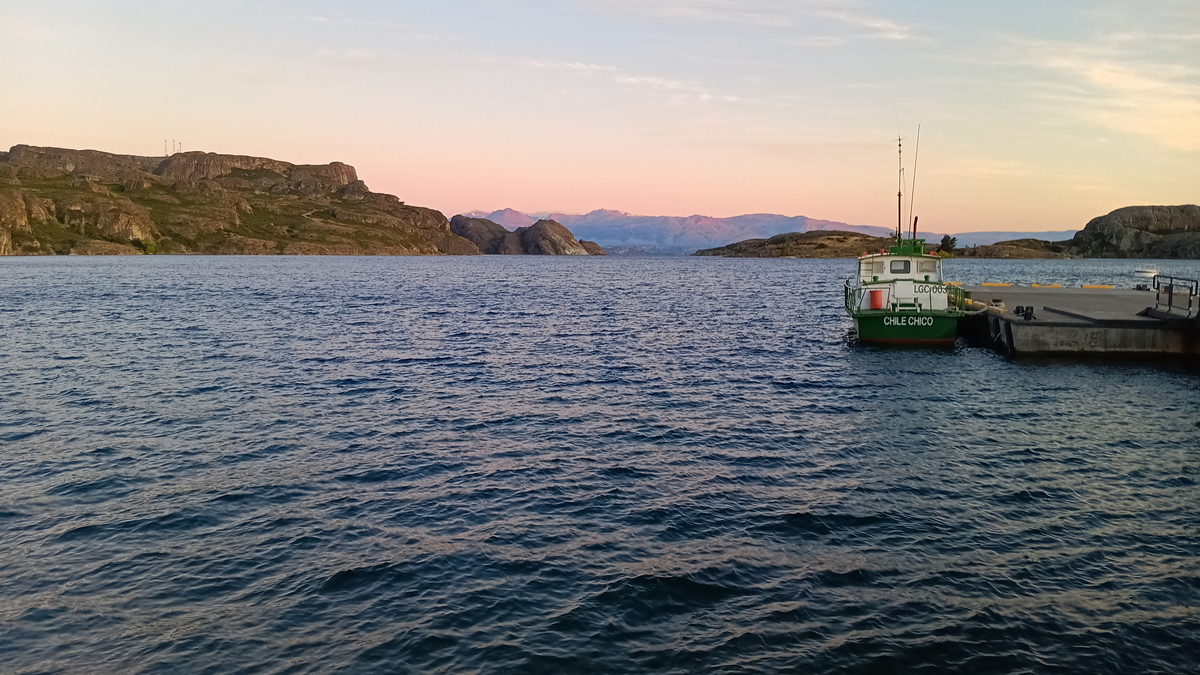
Early morning in Chile Chico
Paso Rio Jeinimeni at Chile Chico/Los Antiguos is the southernmost border crossing along the Carretera Austral accessible in a regular 2-wheel-drive vehicle. The only road crossing further south is at Paso Roballos, a challenging 4x4 route. Beyond that, crossing on land can only be accomplished by hikers, cyclists, and those on horseback.
Chile and Argentina have separate border posts here, about 6 kilometers apart. The usual bureaucracy ensued in both countries, where much important-looking stamping of various documents occurred, but the entire process, including the short drive, took only half an hour. It was practically pleasant.
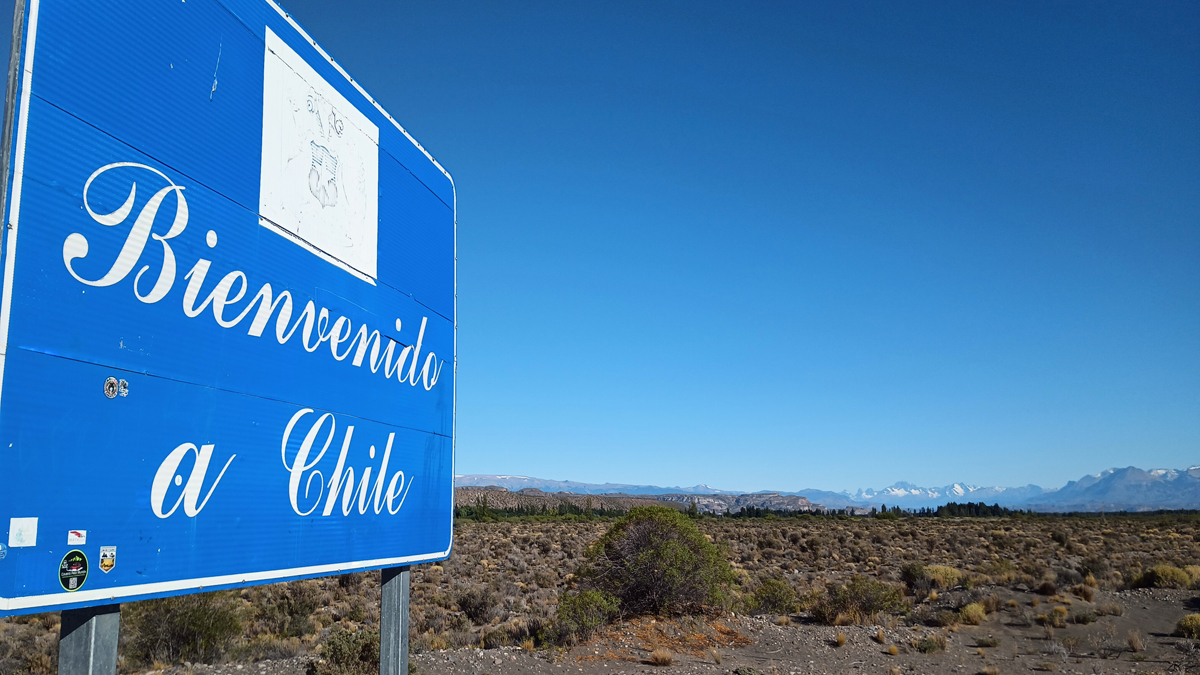
Goodbye, Chile
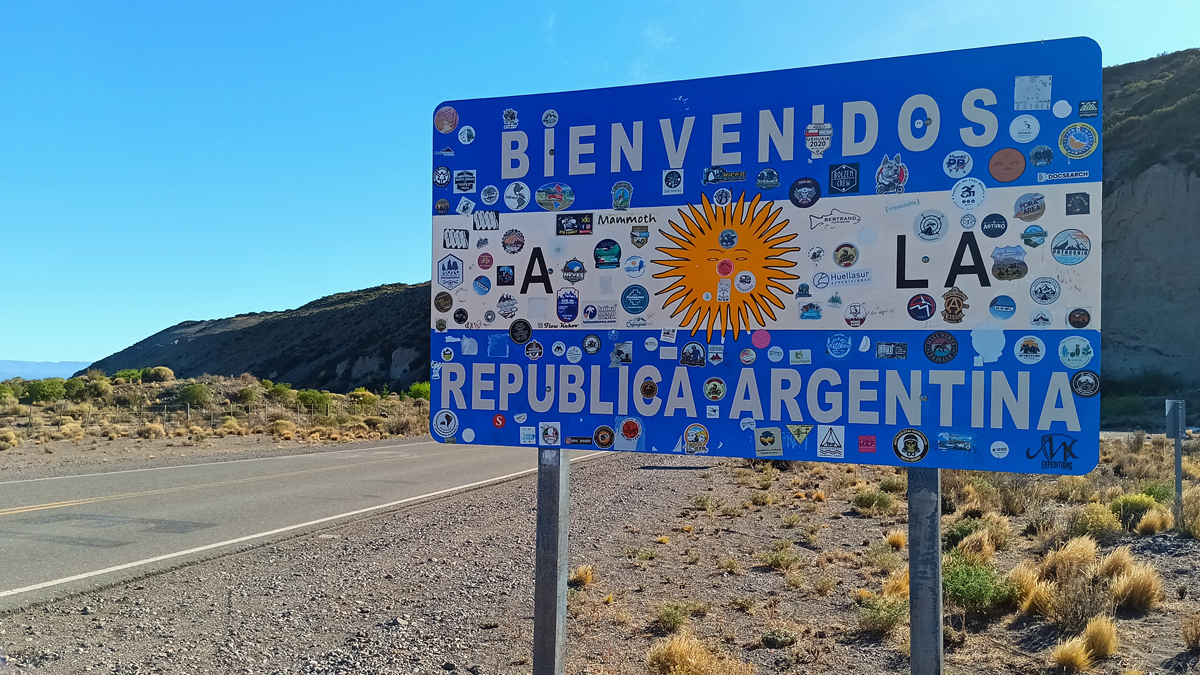
Hello, Argentina!
In the border town of Los Antiguos, we changed a few dollars to Argentine pesos at a convenience store and stopped at three different miradors before jumping on Ruta 40 and racing north. We had 600 km to cover today, so we had to move!
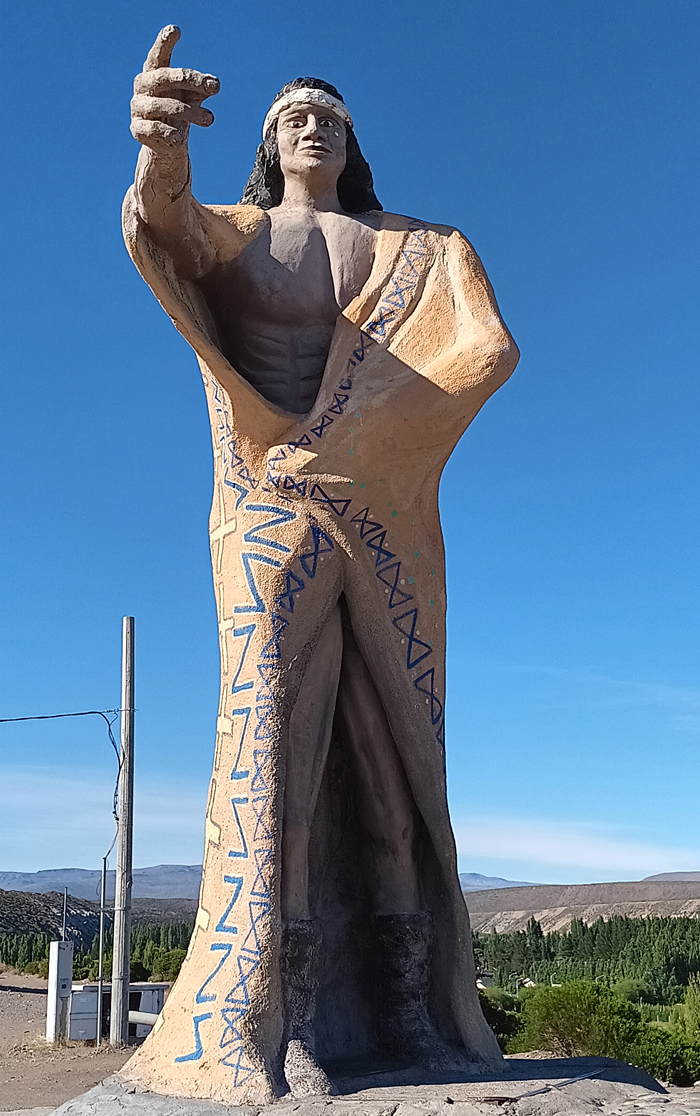
Mirador Espiritu Bueno
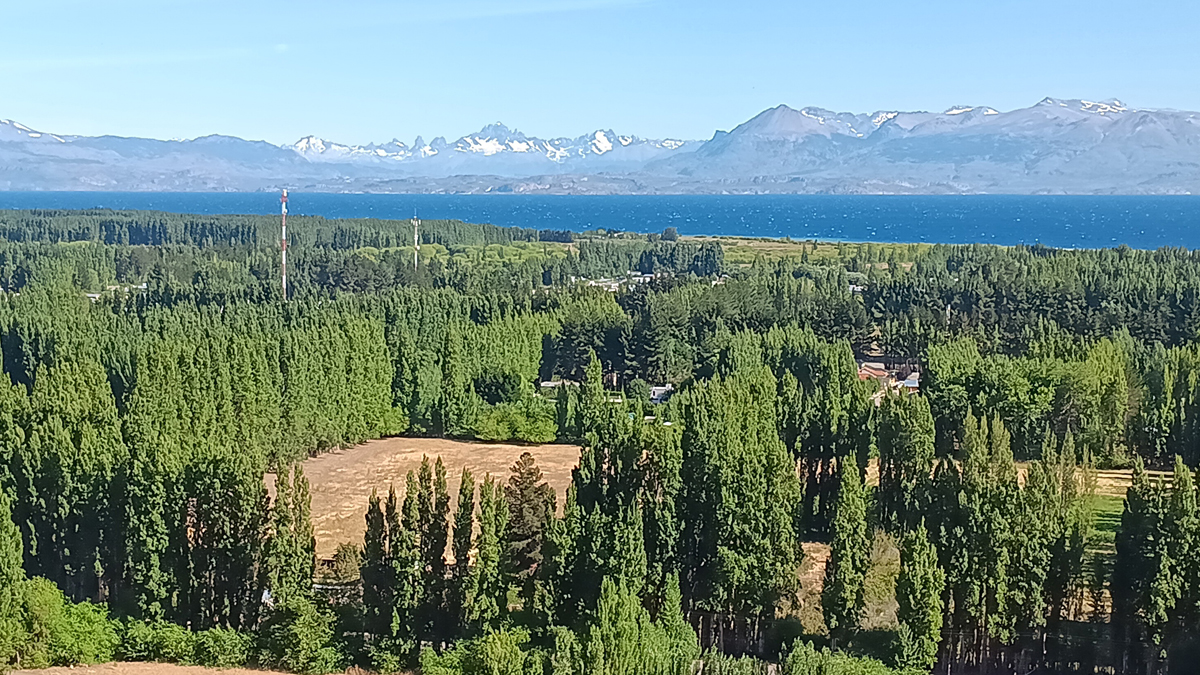
Lago Buenos Aires aka Lago General Carrera
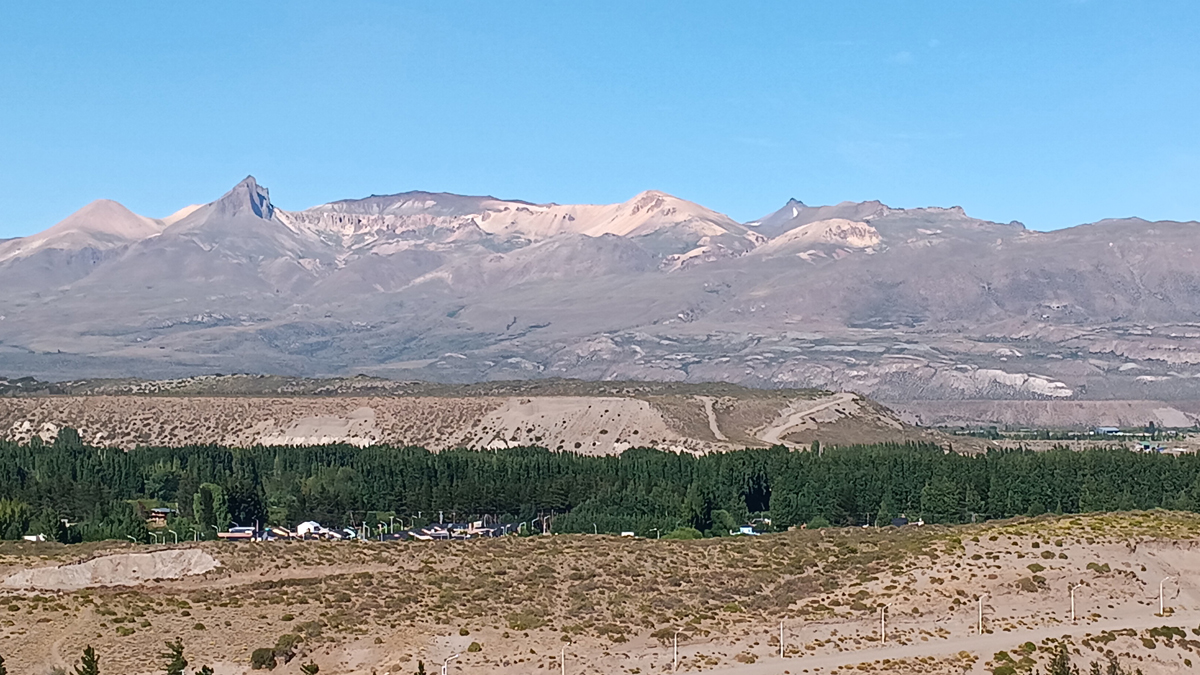
Arid Argentina
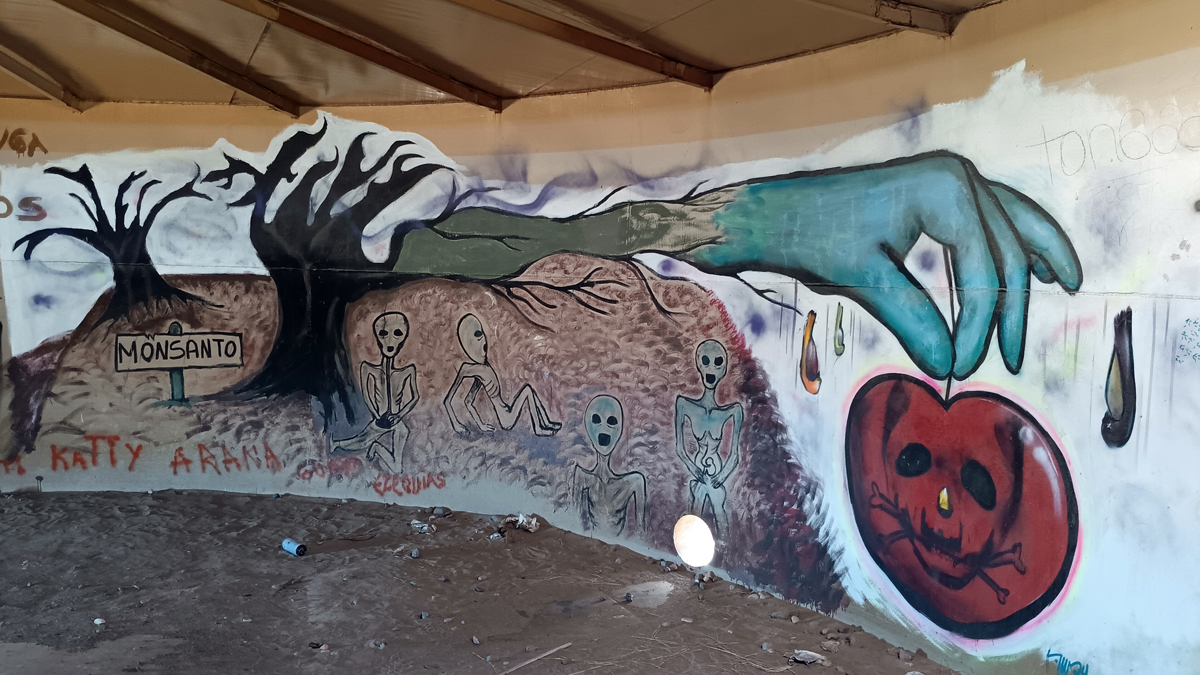
Anti-Monsanto graffiti
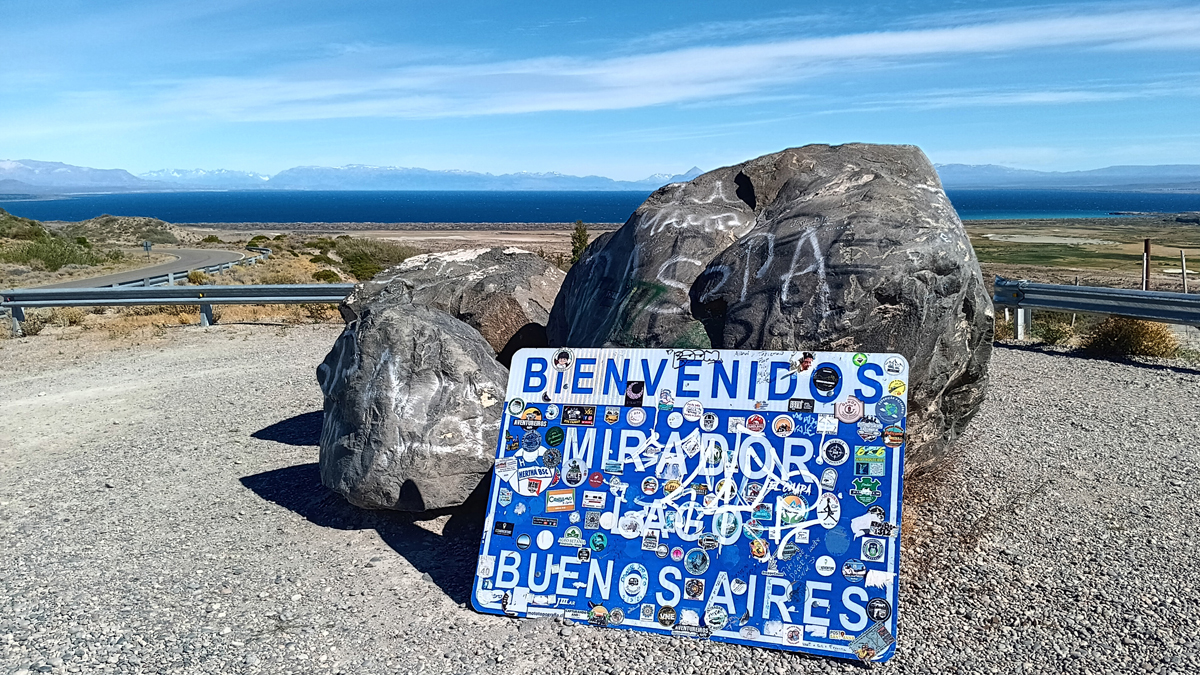
Stickers, graffiti, and a beautiful view
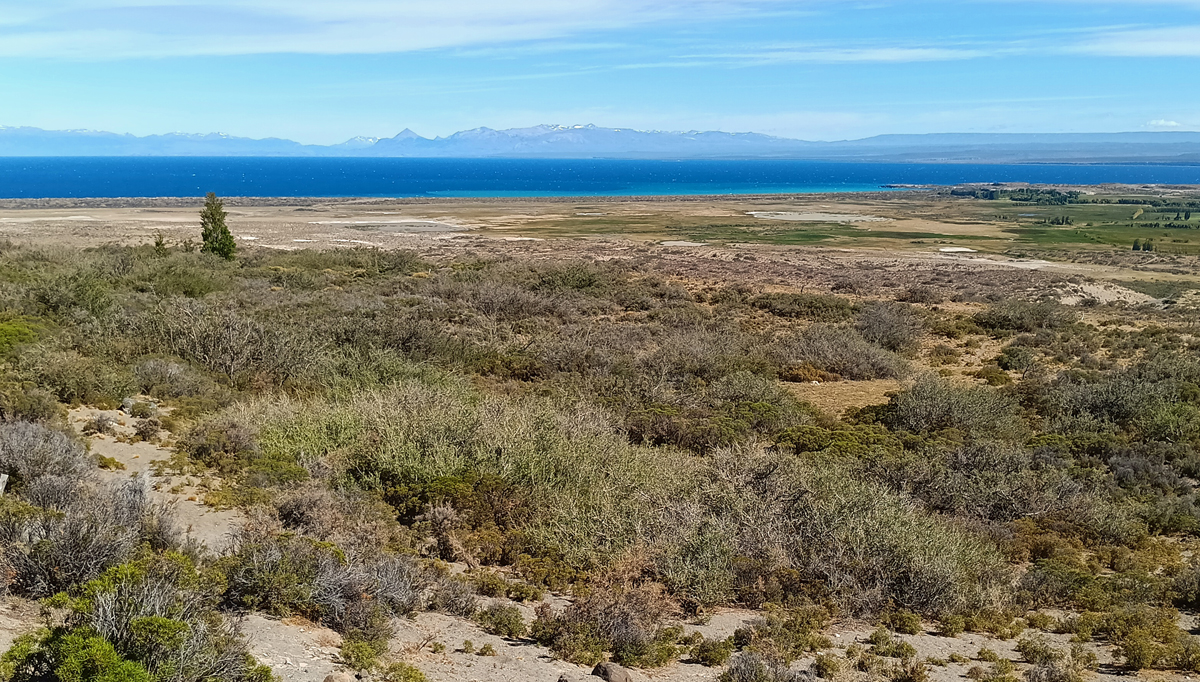
Mirador Lago Buenos Aires
Argentina's Patagonian landscape is very different from that of Chile – flat for long stretches and very dry. We made good time, with the exception of about 50 km of the worst pavement we've ever had the misfortune to travel. The surface was a pot-holed wreck, and we slowed to a crawl to avoid a third trip to a gomeria. They need to rip of that section of road and start from scratch!
Las Malvinas: 42 years after the Falklands War, people here remain passionate about Argentina's claim to the islands they call Las Malvinas. All forms of public transportion in Argentina are required to bear the words “Las Malvinas son Argentinas” (The Malvinas are Argentine), and we saw roadside signs bearing pictures of the islands EVERYWHERE.

Las Malvinas, "Argentine forever"
With the wide-open countryside on this side of the border, we were able to spot a lot more wildlife. The guanacos and rheas were plentiful, and we were lucky engough to run across a flock of colorful flamingos.

Roadside rhea
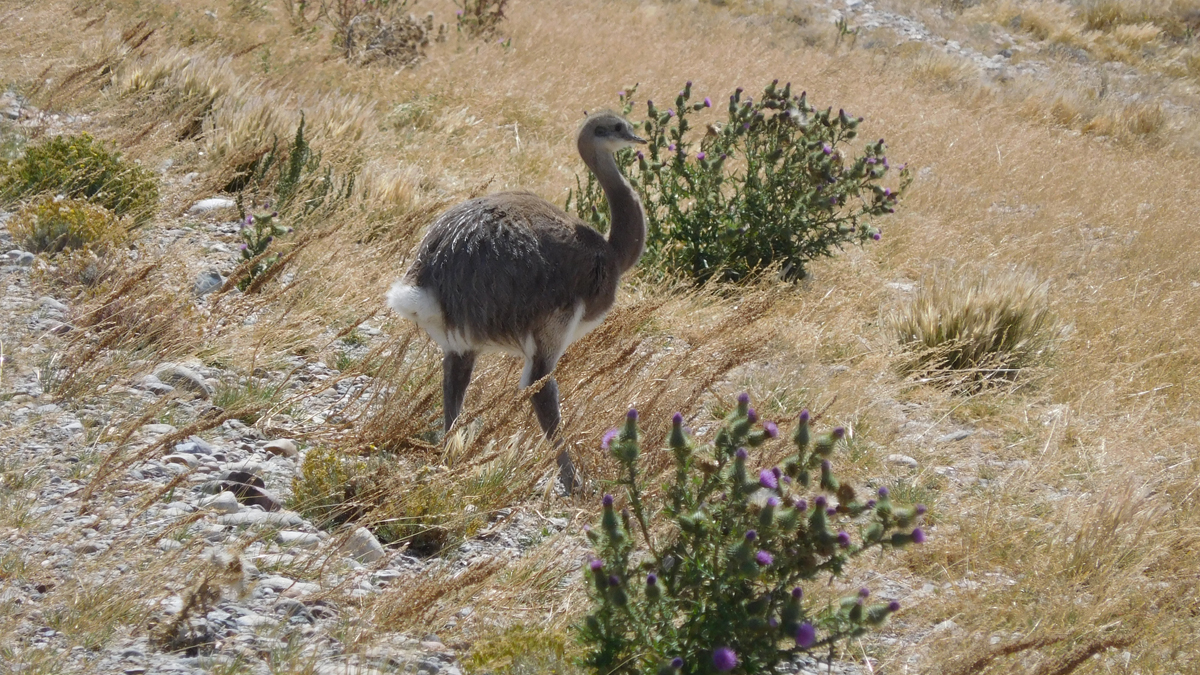
Related to the ostrich

Argentine countryside
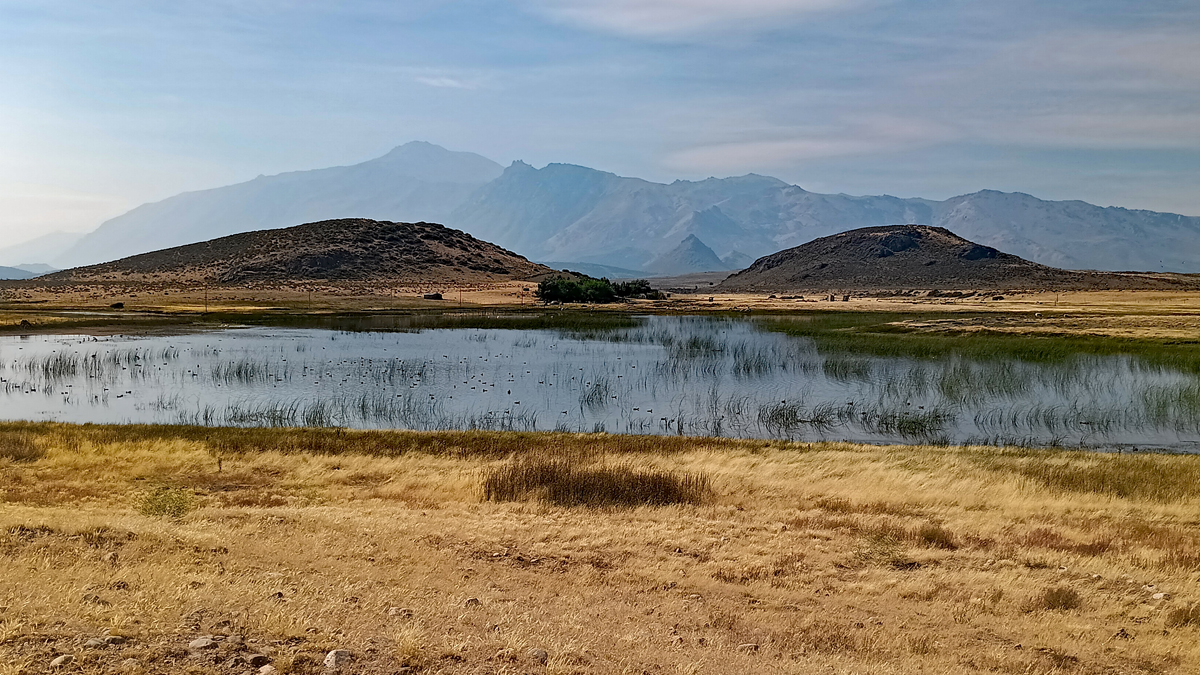
Oasis in the Patagonian steppe
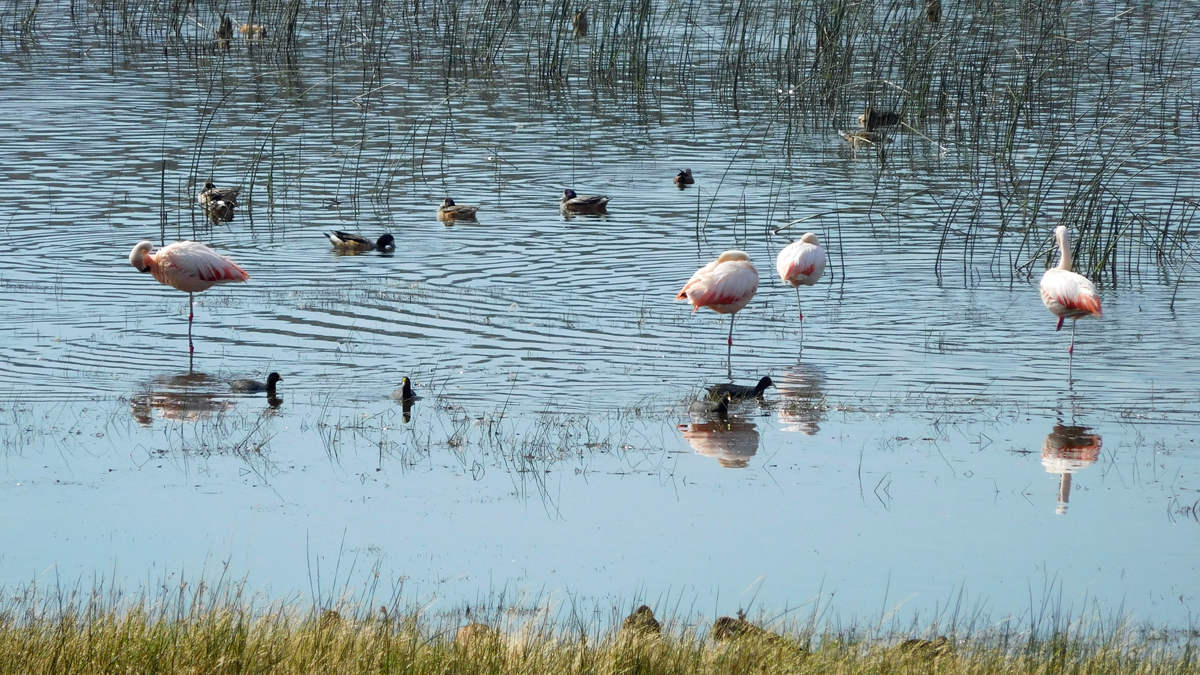
Flock of flamingos
The car was caked in mud from yesterday's rainy drive on the gravel road, so when we finally arrived in Esquel (pop. 35,000), our first stop was the car wash. The car doesn't need to be spotless when we return it in a few days, but things had kind of gotten out of hand. The wheel wells were particularly mud-packed.
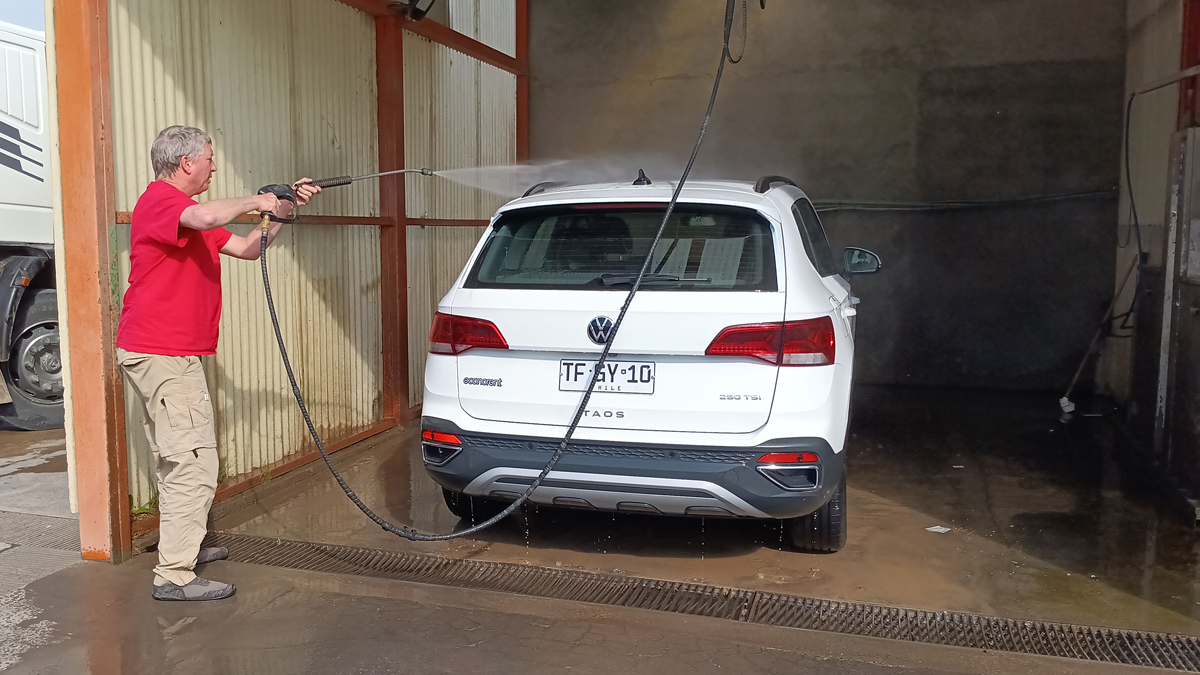
Bath time for the Taos
After the car wash, we visited some various miradors around Esquel. There were wildfires nearby, and the sky was quite hazy, but the vistas were still nice.

Laguna La Zeta, Esquel
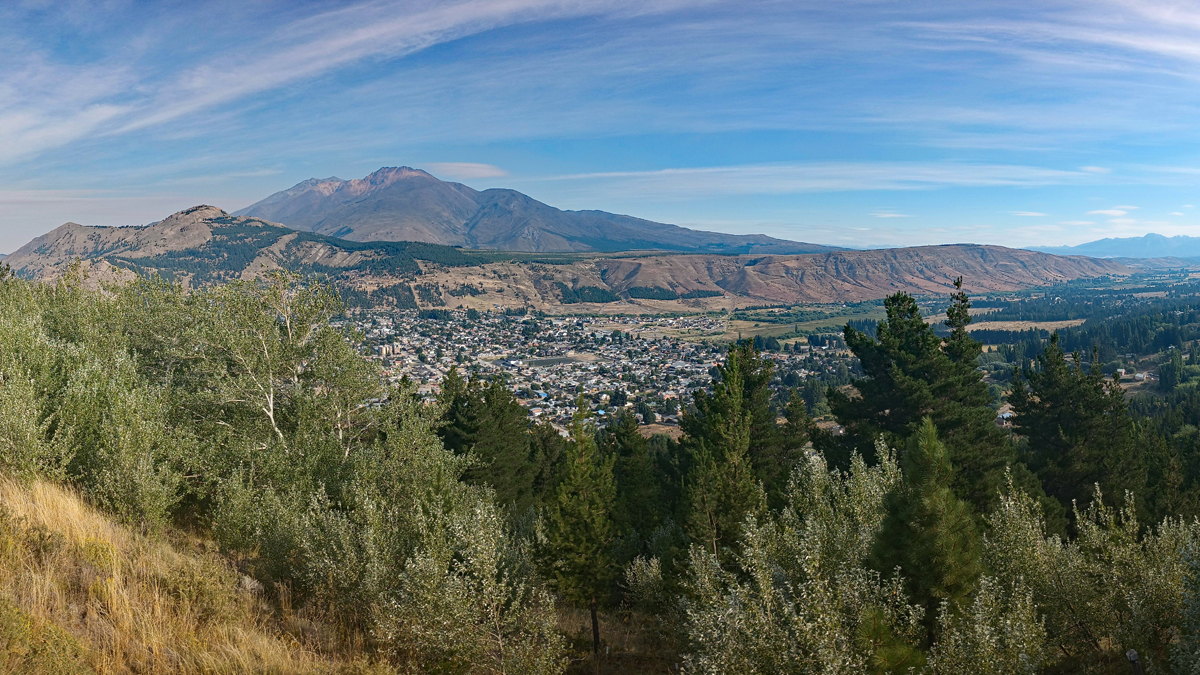
Punto Panoramico, Esquel City
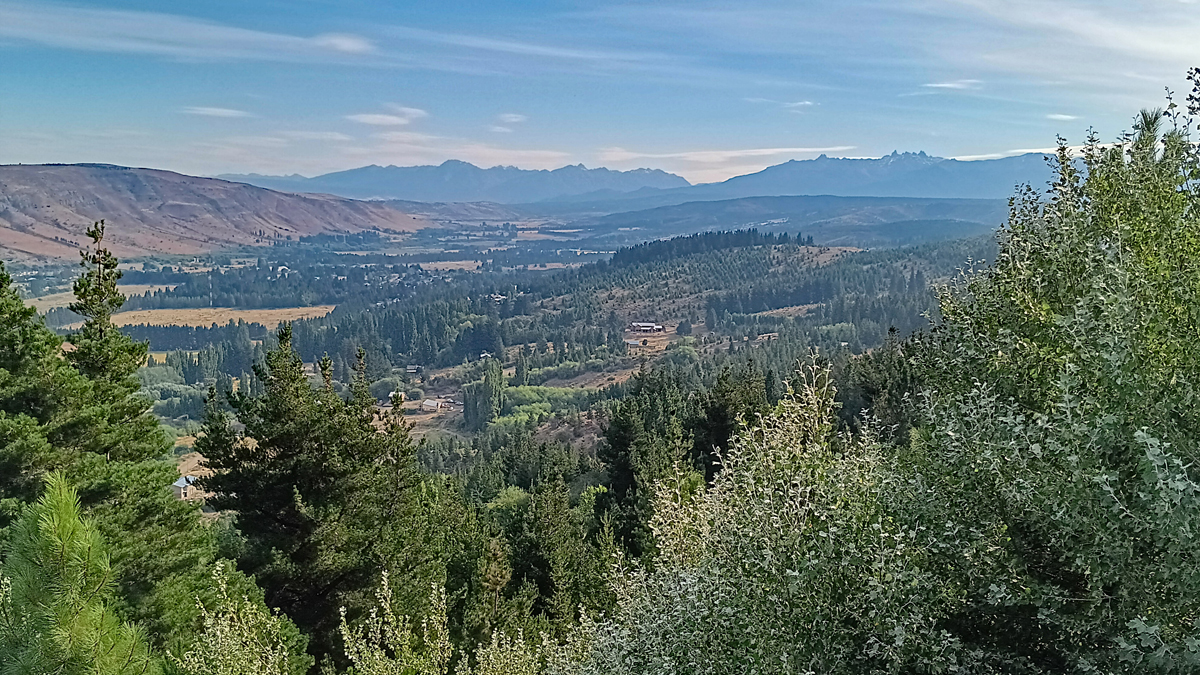
Another view from the ridge
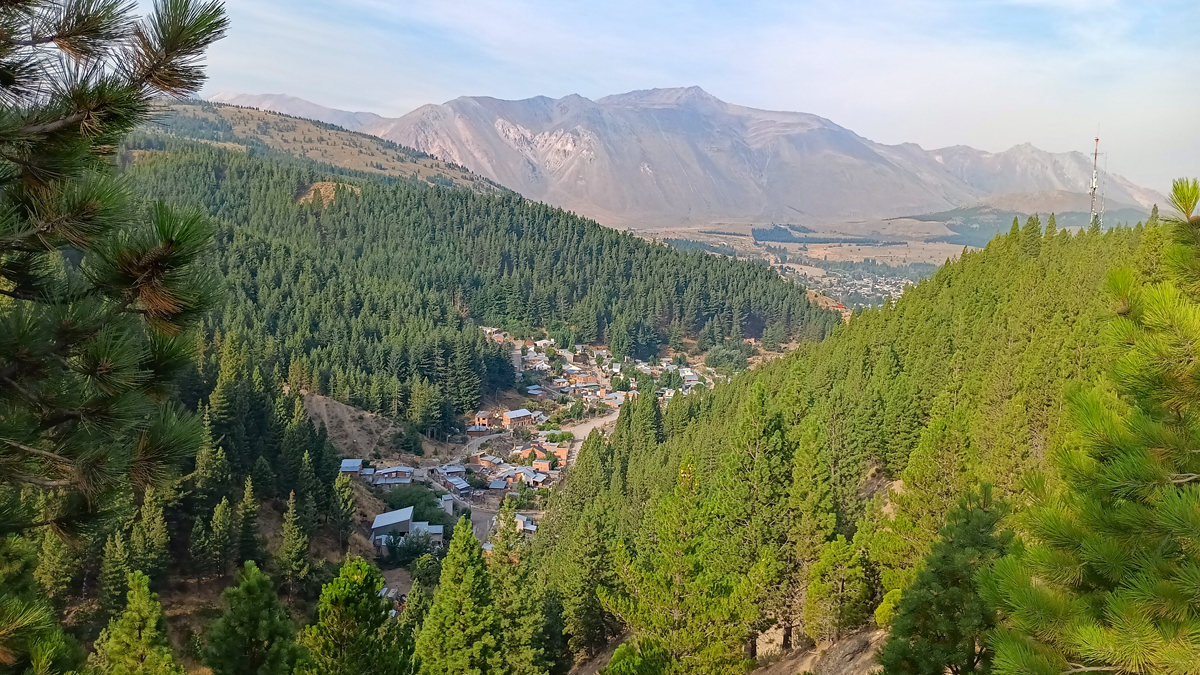
And another
It was 7:30 by the time we arrived at Araucarias Apart. Our cabaña was basic but comfortable, and host Gladis was incredibly friendly and accommodating. Tom and I had gotten by pretty well in Spanish while in Chile, but once we entered Argentina, we found the accent impenetrable. But Gladis and I pulled out our phones and communicated just fine via our translator apps. One thing she told us is that the nearby wildfires are located in Parque Nacional Los Alerces, where we're headed tomorrow, but that the park is still open. Presumably, it will be safe...
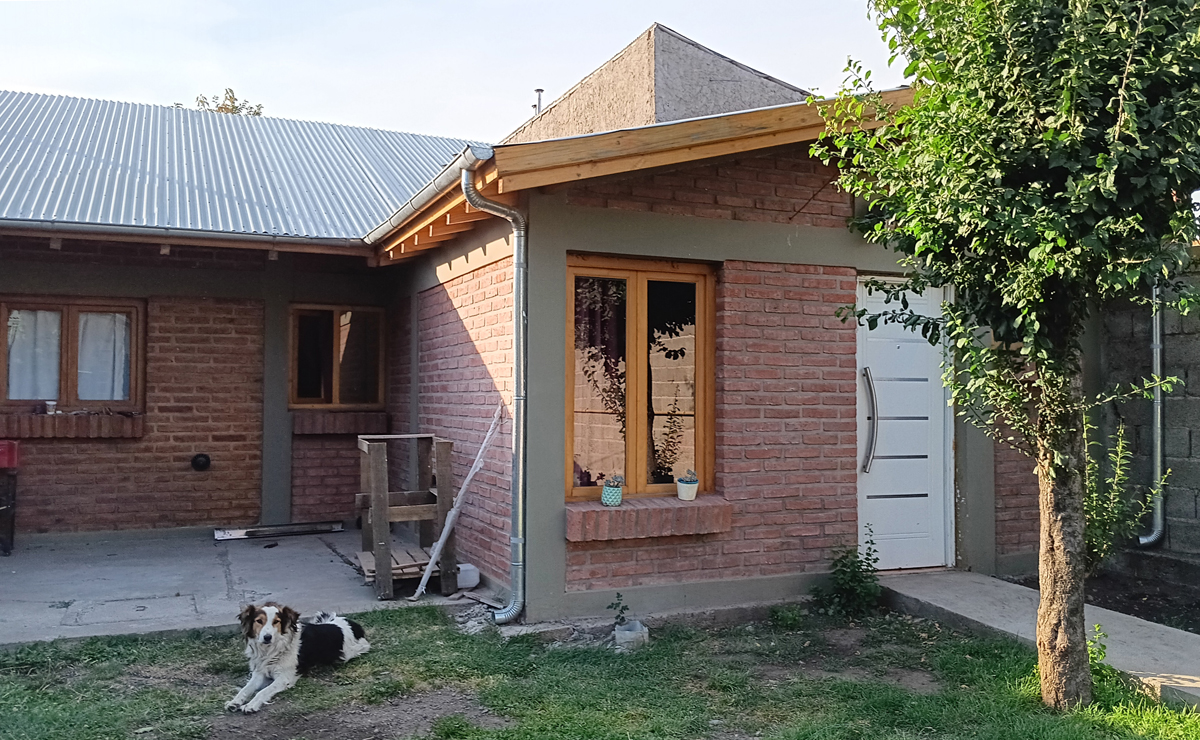
Araucarias Apart and its loyal mascot
It was a short walk from our cabaña to the center of Esquel. We found a cool street with several brewpubs and chose Plan B Bar because we liked the name. The porter they had on tap was excellent, and so were the cheeseburgers. Restaurant meals in Argentina are a bargain. The burgers plus four beers only cost the equivalent of $30, including tip. Hopefully, Argentina's new president will be a boon for their struggling economy.
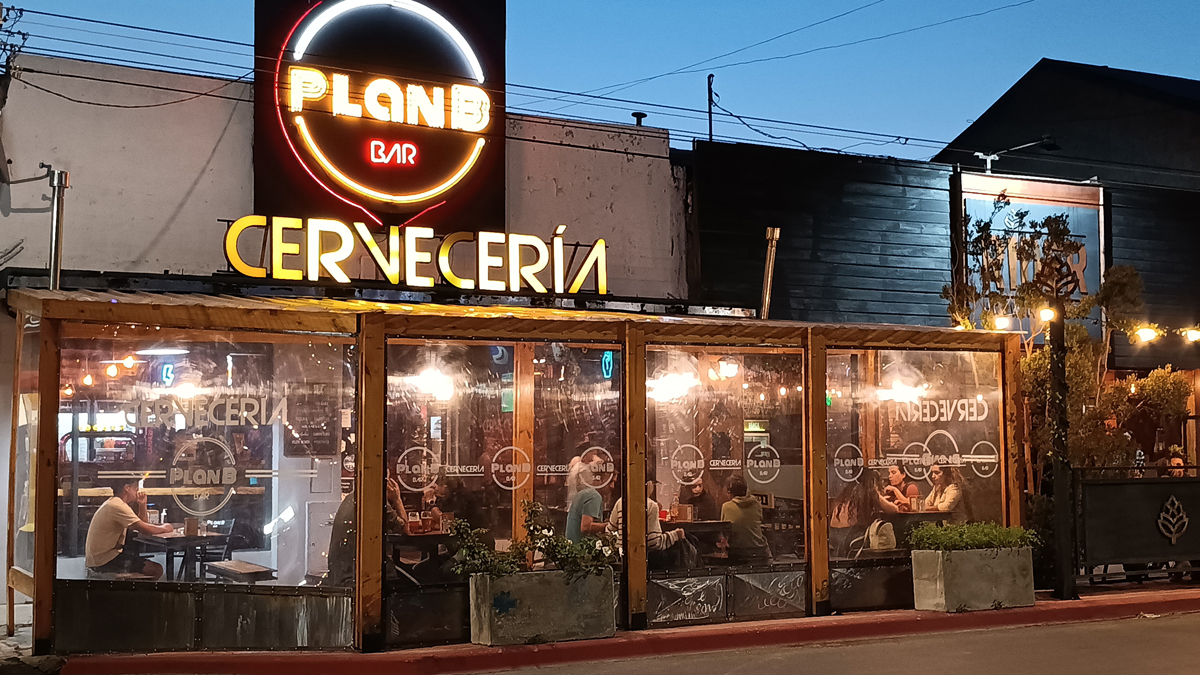
Plan B Bar, our first choice
On the way back to the cabaña, we stopped at a mini-market to pick up a few provisions. There was a line out the door, and they were only letting people enter as someone else left. This was our first experience with the ubiquitous lines of Argentina. What a pain!
Mileage: 611 km